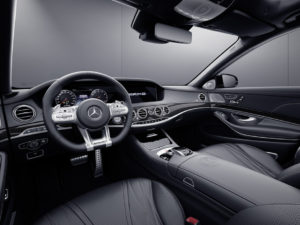
A key result of the survey shows: When buying the next car, 18.3% of all respondents will not buy the same brand as the current car, 34.9% are still undecided. This means that half of the car users need to be persuaded again when purchasing the next car. But what are the main differentiating factors?
For many decades the exterior design used to be the decisive, emotional factor in the car purchase, the surveyors say. While this is still valid, this “emotionalization” is now also taking place in the inside of the vehicle. Partially supported by new emerging drivetrain technologies and mobility models, the passenger compartment is becoming an increasingly important factor next to exterior, drivetrain, driving performance and fuel economy.
When purchasing the current car, the interior design was important to 54.8%, compared to 57.2% who paid more attention to the exterior design. Looking ahead to the purchase of the next car, the interior is rising by 5 percentage points (59.8%) in its importance, the exterior by 4 percentage points (61.4%).
Heiko Rother, general manager of business development automotive at Asahi Kasei Europe, on the increasing importance of the automotive interior: “Customer expectations are not changing overnight, but gradually and much faster than we have seen in the past. More than half of the car buyers in Europe are ready to change the brand. A great chance for OEMs to win new customers by implementing convincing technologies which are touching all senses, addressing human emotions and needs.”
One out of ten respondents (10.3%) sees the poor processing quality of interior surface materials as the most annoying factor in the current car. 44.8% of all respondents see a benefit in surfaces that look and feel especially high quality – for example seats, dashboards or headliners – compared to just 11.4% who do not. A third of all participants (32.5%) would be willing to pay a reasonable price for these surfaces as extra equipment. While the word “reasonable” is of course strictly subjective, it shows the growing importance of interior surfaces. Asked about the surface material itself, 57% of the respondents think that sustainable materials for seat covers and surfaces will be becoming increasingly important in the next 5 to 10 years, while the need for real leather equipment will fall drastically.
Asked about additional functions of the seat covers and surfaces, 49% of all respondents see a benefit in antibacterial properties. Taking a closer look at the age structure, it turns out that car users from 18 – 39 years are seeing a stronger benefit of antibacterial surfaces, especially compared to the participants over 59 years. The same trend can be seen in regard to seat covers and surfaces with odor-inhibiting properties. 49.3% see a benefit in these surfaces.